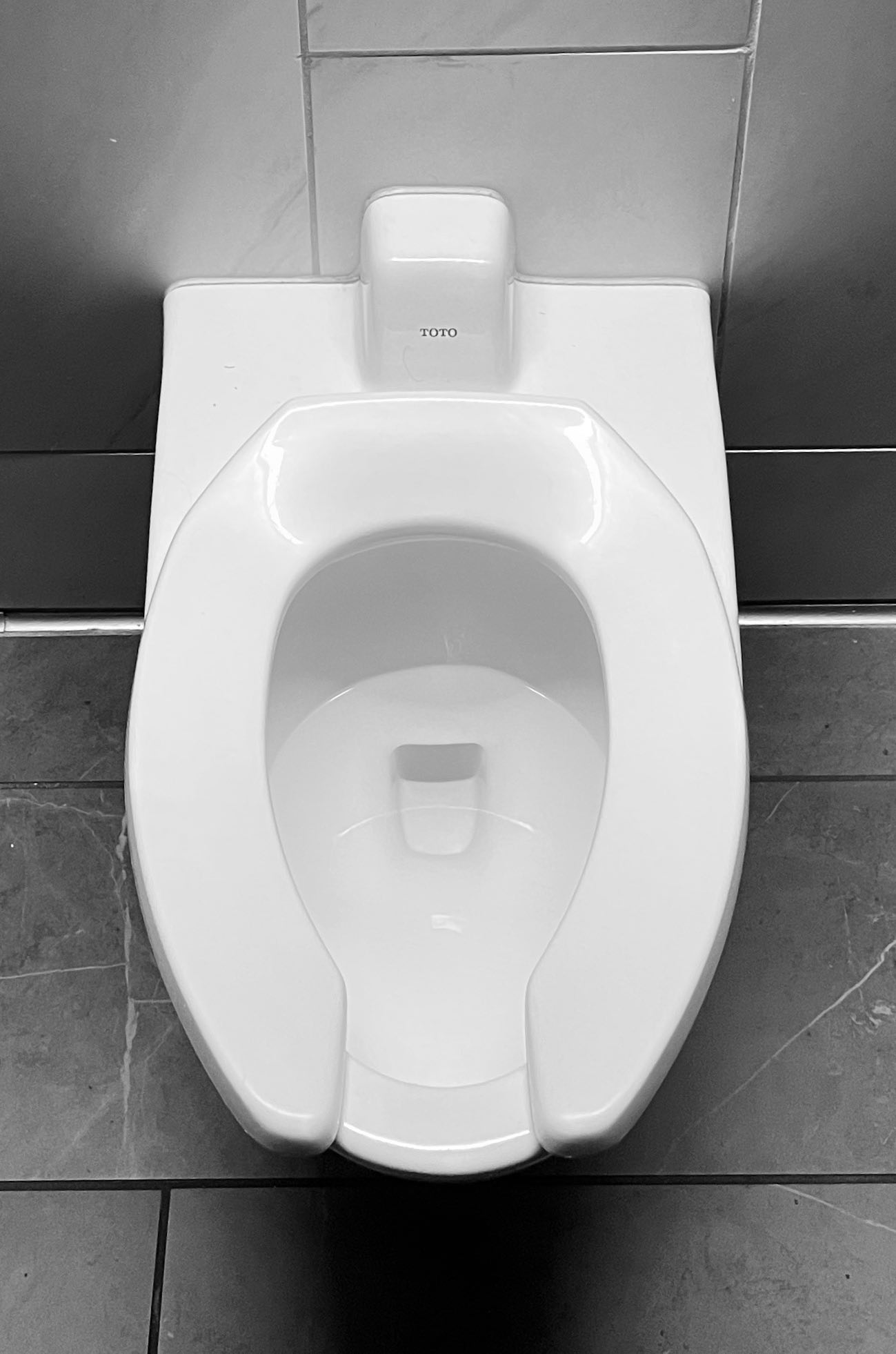When it Comes to Toilet Aerosols, Seeing is Believing
Earlier this month, toilet flushing made a splash. Or, more accurately, an explosive mist. Scientists at The University of Colorado, Boulder demonstrated that when you flush a public toilet, more comes up than goes down.
Dr. John Crimaldi, professor of civil, environmental, and architectural engineering, is interested in studying invisible clouds of particles, called “plumes.” In nature, animals sniff odor plumes to navigate, forage, and signal to potential mates. However, as a “highly visual primate,” Crimaldi knew that he needed to visualize the plumes to study them in detail. “I understand something better if I can see it,” he said.
Several years ago, his research group used lasers to illuminate and study these odor plumes in the laboratory. Recently, they applied their technology to a different type of plume: the one that erupts out of a toilet bowl. 
Flushing a commercial toilet produced a “strong chaotic jet” that rocketed aerosols nearly five feet into the air, as measured in Crimaldi’s paper published earlier this month in Nature Scientific Reports. Aiming green lasers at the toilet to illuminate the particles, Crimaldi and his co-authors captured striking images of the resulting plume. “Some of them are beautiful,” Crimaldi said. “Beautiful and terrifying.”
A five-second flush generates aerosol plumes that peak in height within eight seconds. The particles are mostly launched upwards rather than outwards, making the initial explosion easier to outrun. However, in a small, poorly ventilated bathroom, it’s likely that the aerosols would diffuse throughout the room and linger for longer, leaving one with the difficult choice between escaping toilet particles and doing a decent hand-wash. In busy restrooms, you’ll be walking into the aftermath of the flush before you.
Previous studies had measured the size and number of particles expelled from toilet bowls but yielded little insight into their flight path. The magnitude of these aerosol plumes wasn’t fully appreciated until Crimaldi directly visualized how quickly and chaotically they spread. The highlighter-green images created a huge splash in the media: Crimaldi estimates that over 160 news outlets have covered the story, and it’s widely shared on social media. Visible data is naturally more accessible and attractive. “If we had published without that imagery, it would have gotten zero attention,” he said.
Still, these findings should be taken with a particle of salt. The study did not mimic the enclosure of a public restroom or typical contents of a toilet bowl, which would both affect particle dispersal. The health consequences of exposure to these aerosols are also unknown. Many readers ask about how toilet plumes might spread disease, but Crimaldi is careful not to speculate. “We are not epidemiologists or public health officials,” he said.
For better or worse, the visual “ick” factor of this data is particularly unforgettable. “It’s definitely changed my relationship with toilets,” Crimaldi said. “I’m far more likely to mask up in a public restroom now than I would have beforehand.”
Because humans are so oriented around what we see, visual data increases the impact of research findings. We make some of our most interesting and important discoveries when scientists like Crimaldi shine a light—or more precisely, a laser—on an otherwise invisible subject.
Additional authors on this publication include Aaron True, Karl Linden, Mark Hernandez, Lars Larson and Anna Pauls of the Department of Civil, Environmental, and Architectural Engineering at The University of Colorado, Boulder.
